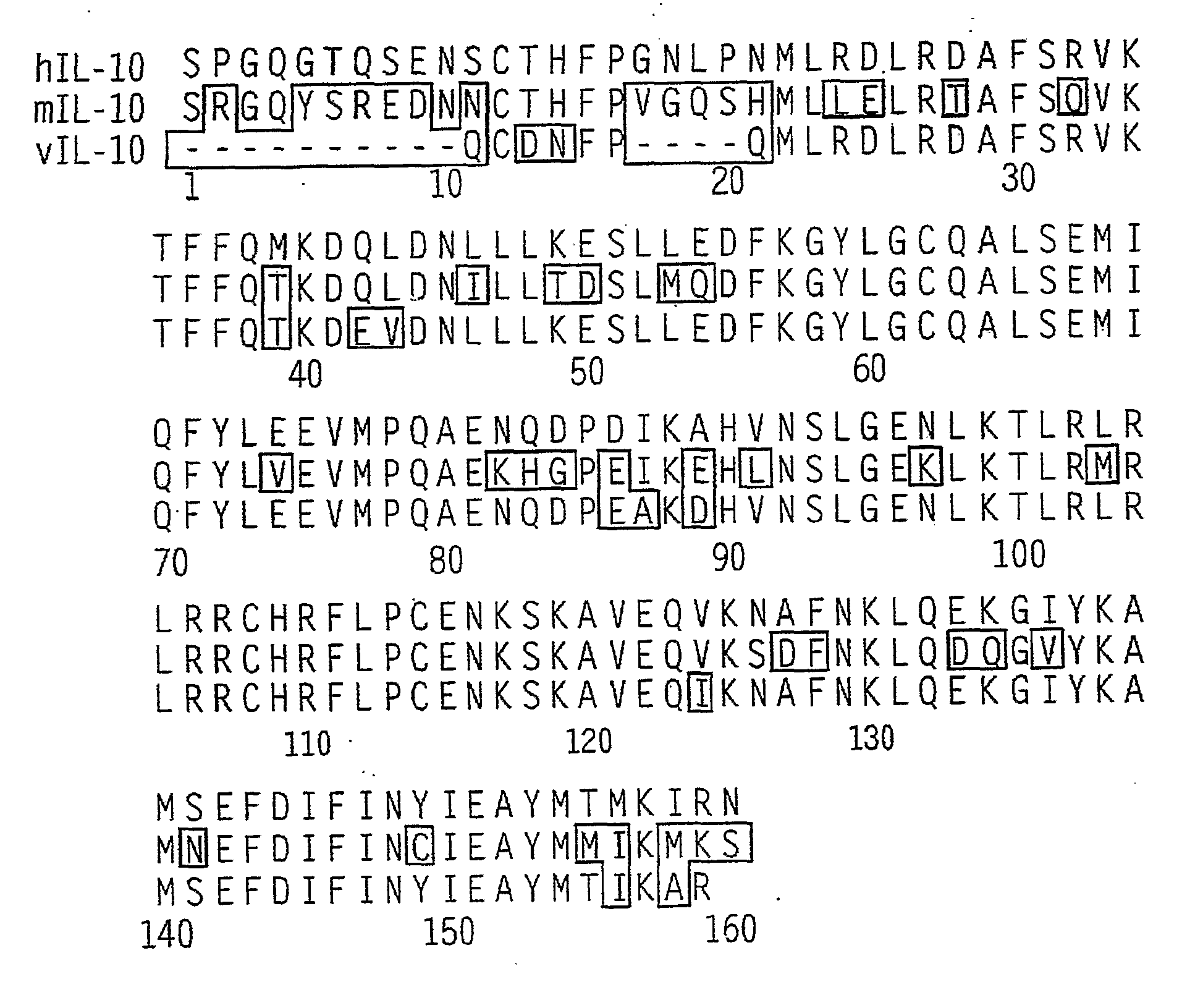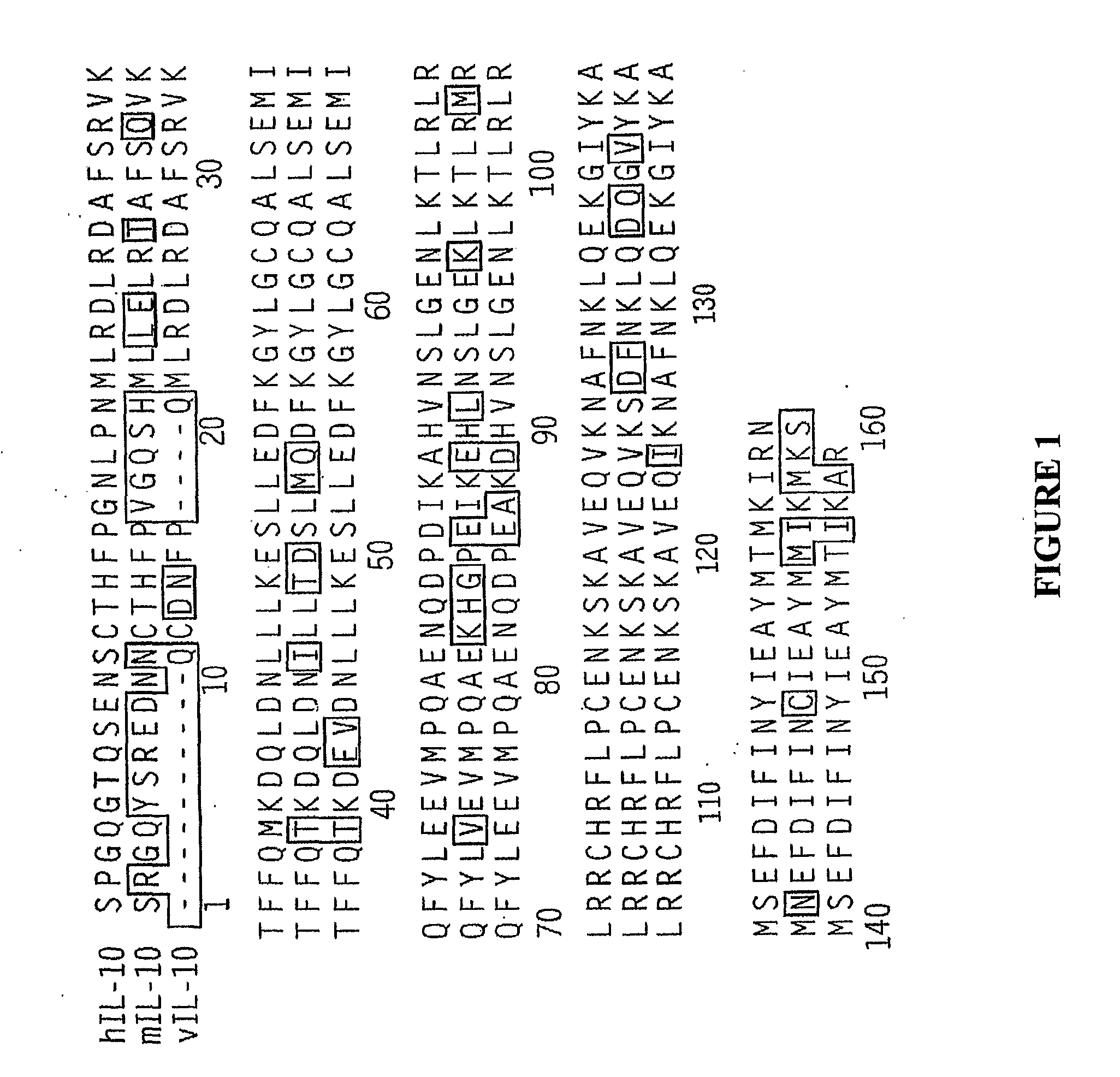Use of cytokine-derived peptides in treatment of pain and neurodegenerative disease
a neurodegenerative disease and cytokine-derived technology, applied in the direction of peptide/protein ingredients, drug compositions, nervous disorders, etc., can solve the problems of individual agony, il-10 has a short half life, and the delivery system of il-10 is problemati
- Summary
- Abstract
- Description
- Claims
- Application Information
AI Technical Summary
Benefits of technology
Problems solved by technology
Method used
Image
Examples
example 1
Oligopeptide Manufacture
[0080]Oligopeptide manufacture is achieved by solid-phase synthesis methods known to those skilled in the art. Analysis of the synthesized oligopeptides includes electrospray mass spectrometry, high performance liquid chromatography, and visual appearance of the purified product. The oligopeptide(s) are prepared in water for injection at 1 mg / ml. An example of a proper IL-10-derived peptide (see U.S. Pat. No. 6,159,937) and a“scrambled” control peptide are provided in Table 1. Peptide sequences are provided in the conventional N→C terminal direction. Amino acids are named using the three-letter nomenclature.
TABLE 1Human IL-10 peptide (IT)Ala-Tyr-Met-Thr-Met-(SEQ ID NO: 4)Lys-Ile-Arg-Asn‘Scrambled’ peptide (S)Arg-Ile-Lys-Asn-Met-(SEQ ID NO: 7)Ala-Thr-Tyr-Met
[0081]Although an exemplary peptide sequence is provided in Table 1, it would be clear to one of skill in the art that various modifications or substitutions could be made to the listed sequence which would...
example 2
Efficacy of IL-10 Peptide in the Chung Model of Neuropathic Pain
[0083]Rats are individually anesthetized using 5% isoflurane in a plexiglass chamber and are then transferred to a mask and maintained at 2.5-3% isoflurane depending upon repiratory rate. Throughout the procedure, animals are maintained on a heating pad warmed to 37° C. Rats are shaved from above the hips to over the left thigh including the area in-between. The shaved area is swabbed with Betadyne and an incision is made from the hip to knee in a straight line using a number 10 blade being careful not to incise the muscle. The common sciatic nerve is exposed at the level of the middle of the thigh by blunt dissection through biceps femoris. Skin is clamped away from the site and the incision is draped. Glass hooks are used to tease tissue away from nerve and 4 ligatures of 4-0 chromic gut is tied loosely around the nerve such that the suture slides along nerve when knotted but not so loose that space...
example 3
Efficacy of IL-10 Peptide in the CCI Model of Neuropathic Pain
[0091]Sprague-Dawley rats (300 g males, n=4-6 per group) are prepared by chronic constriction injury (CCI) surgery. Bennett G J and Xie Y K (1988) Pain 33, 87-107. IL-10 peptide IT and scrambled peptide S are solubilized in water and injected at the indicated doses (1 μg in 10-20 μl final volume) intrathecally under brief isoflurane anesthesia (Milligan et al., 2001, J. Neurosci. 21:2808-19). Behavioral measurements for mechanical allodynia (von Frey testing) are carried out throughout the pre- and post-surgical periods. The peptide has been assayed previously for a variety of immunomodulatory functions known for human IL-10 (Osman, mm et al J Egypt Soc Parasitol. 1999; 29(1):13-20), and results show that this peptide shares some, but not all, of the functional activities of intact IL-10, at generally different dosage levels.
PUM
| Property | Measurement | Unit |
|---|---|---|
| volume | aaaaa | aaaaa |
| volume | aaaaa | aaaaa |
| time | aaaaa | aaaaa |
Abstract
Description
Claims
Application Information
 Login to View More
Login to View More - R&D
- Intellectual Property
- Life Sciences
- Materials
- Tech Scout
- Unparalleled Data Quality
- Higher Quality Content
- 60% Fewer Hallucinations
Browse by: Latest US Patents, China's latest patents, Technical Efficacy Thesaurus, Application Domain, Technology Topic, Popular Technical Reports.
© 2025 PatSnap. All rights reserved.Legal|Privacy policy|Modern Slavery Act Transparency Statement|Sitemap|About US| Contact US: help@patsnap.com


